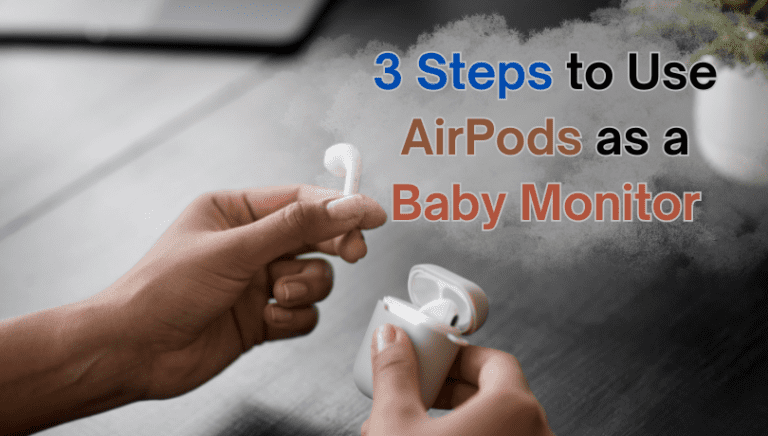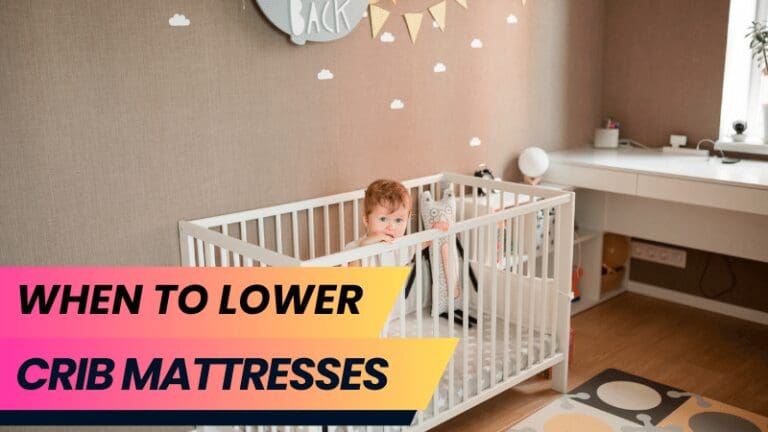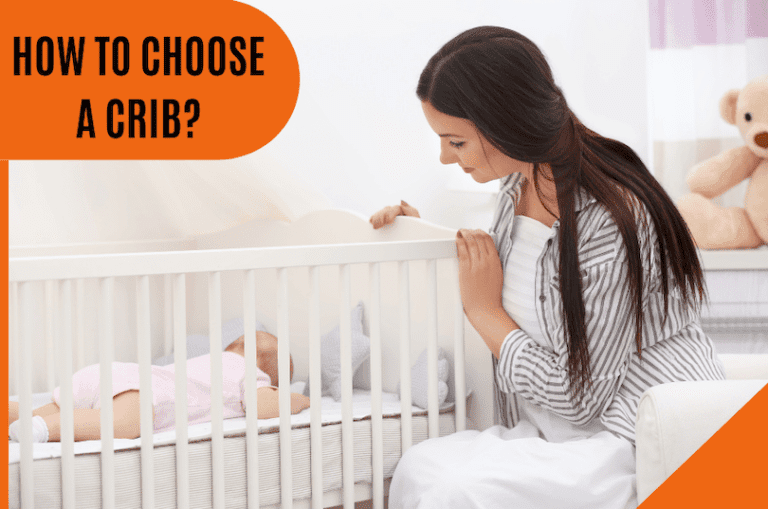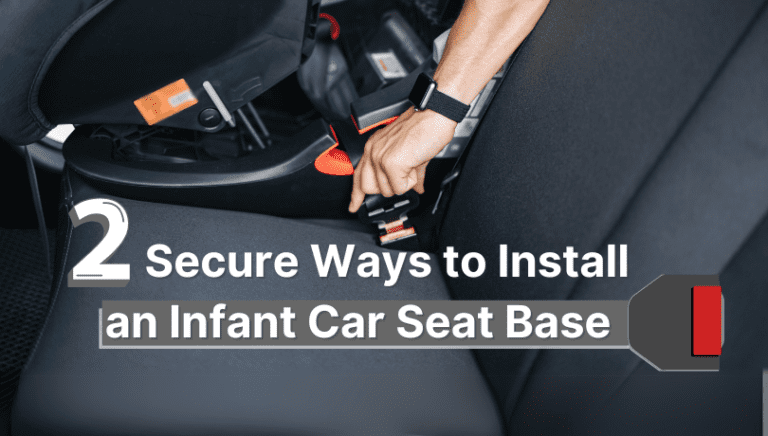Ultimate Guide: Baby Bouncer Age Limits and FAQs
Parenting has always been a rewarding experience in my books. My six children have always kept me on my toes, and my newborn, Theo, takes the spotlight these days. But, you know, parenting is different today. I’m bombarded constantly with conflicting information, and on social media, people tell me a hundred ways to raise my child. Simple decisions like when to put your baby in a bouncer can feel daunting.
So, I thought I’d share my knowledge about using baby bouncers in this article. And did you know there’s a difference between bouncers, swings, and rockers?
- A baby bouncer gives your baby a gentle bounce when they stay reclined. A baby swing soothes your baby with its rhythmic rocking. Then there’s the rocker, similar to your grandma’s rocking chair, but these have music and toys to keep your baby occupied.
Now, if you’re wondering when your baby can use a bouncer, you’re not alone. This article provides safety tips, benefits, and a purchase guide and helps you with any concerns about baby bouncers.
Table of Contents

When to Use a Baby Bouncer: Age Limits
You can use baby bouncers in the pre-walking and crawling stages. The recommended baby bouncer age limit is from infancy to six months old.
Is Your Baby Ready for the Bouncer?
Your baby needs neck and head control to get ready for baby bouncers. It ensures their heads won’t flop about or tip forward when strapped into the bouncer.
- Key milestone: Babies should be able to hold their heads up for a reasonable amount of time (30 seconds or more) during tummy time.
We should also consider muscle strength a critical developmental milestone before putting them in a bouncer. With my baby, Theo, I waited until he could support his weight for at least 30 seconds on his forearms before I decided he was ready.
- Key milestone: If the baby can push themselves up during tummy time for a short period, they have the necessary strength for a bouncer.
How to Safely Introduce Bouncers to Your Baby
I am extra cautious and always read the safety manual when dealing with baby gear. It helps to check the bouncer’s height, weight, and strength capacity and see if they fit your baby’s needs before introducing them to bouncers.

If you have already done all that, follow these tips to ensure you use your baby bouncer safely:
- Keep on a Stable Surface – Always place the bouncer on a stable and even surface, such as your living room floor, bedroom, or kitchen. Please do not put the bouncer on an elevated platform like a kitchen island or soft surface since it can topple over with your baby!
- Maintain the C-Curve – Your bouncer should respect the baby’s physiology. Babies should lie down or stay reclined for the first few months. Hence, the bouncer should have a slight C-curve rather than a straight back to support the baby’s natural kyphosis.
- Spacious Bouncer Seats – Being an experienced mama, I always prefer stationary bouncer seats over a jumper attached to the door frame. These seats are big and spacious enough to support the neck and head of your infant.
- Check the Straps – Strap your baby well when you put them in the bouncer seat. The straps should be secure enough to hold them in place but not too tight because we don’t want it interfering with their breathing. I also check for sharp edges while strapping them in the bouncer so it doesn’t dig into their sensitive skin.
- Always Keep Watch – Never let your guard down when you put your babies in a bouncer. Bouncer seats are excellent for your baby’s entertainment and development, but please don’t leave them unattended.
Bouncers have been a great help in keeping my kid safe during playtime and more. That said, it’s also vital to know when to stop using a bouncer for your baby.
You should typically stop putting them in the bouncer at around six months because their movements become stronger. When you continue using them even after six months, your baby might topple themselves with the bouncer and get hurt. We do not want that happening!
Dear parents, you also need to set a time limit for how long your baby can play in a bouncer in a day. Don’t keep them in it for too long! Encourage more tummy time and use baby containers only within limits.
Choosing the Right Baby Bouncer
Baby bouncers have a seat, a frame, and safety harnesses. The bells, whistles, and other entertainment elements like music and toys are optional. So, here’s what I usually focus on when looking for a baby bouncer:

1. The Seat
I ensure the seat is soft and breathable and that the materials don’t irritate my baby’s sensitive skin. And the incline of the seat depends on your baby’s age.
For example, infants like to be on their backs, so you can choose a reclined seat for them. For older babies, a more upright setting might be more suitable. You can find bouncers with adjustable inclines to suit your baby’s needs.
2. The Frame
I’ve learned that a wide metal frame is best for a baby bouncer because repetitive use weakens those plastic frames, and they break over time. I don’t prefer narrow frames because it makes the bouncer too unstable.
3. The Safety Harness
A 3-point harness is crucial, whether on car seats or bouncers. Because those harnesses help protect your baby’s head, neck, and spine.
And the material of the harness also matters! Please ensure it doesn’t hurt your baby. The straps shouldn’t pinch their little fingers or toes. My recommendation is to test them at the store before buying. You can also check the weight limit on the product to ensure it fits your baby.
Alternatives for Baby Bouncers
So, now we know that baby bouncers have age and weight restrictions. Parents also look at other alternatives to keep their little ones occupied. Here are options you can consider and see how they compare to baby bouncers:

| Bouncer | Jumper | Rocker | Swing | |
| Age Group | Newborn to 6 months | Six months to 2 years | Three months to 1 year | Birth to 1 year |
| Weight Limit | 18 to 30 lbs | 25 to 30 lbs | Birth to 20 lbs | Birth to 25 lbs |
| Purpose | Entertaining and keeping the baby safe for a short while | Helping your baby exercise and have fun exploring their movements | Helps calm your baby down while you enjoy a few minutes of relaxation | Soothes a fussy baby and keeps them safe for a little while |
| Benefits | – Ergonomic design – Portable – Easy to soothe your baby | – Keeps your baby entertained – Introduces variety in their routine | – Mimics the swaying movement of the womb to soothe a fussy baby | – Develops fine motor skills – Stimulates cerebral cortex – Encourages baby to focus |
Baby Bouncer Don’ts
The baby bouncer is a great choice when you gradually get comfortable with your new routine. However, it also helps to know how and when NOT to use it.
- No Napping in the Bouncer – The first and foremost concern is letting your baby sleep or nap in the bouncer. It can be dangerous since they do not have great neck and head support. Their airway might get obstructed, and this can lead to SIDS or positional asphyxiation. So, don’t let them nap in the bouncer!
- Knowing Age Limits – Another critical factor is knowing when to stop using the bouncer. All models come with age and weight restrictions solely for this reason. So, please pay attention to the safety instructions to avoid tipping over and hurting your little one.
- Limiting its Use – When we use baby bouncers for too long, we can end up overstimulating our babies! Overusing bouncers can delay their development, and our precious children need more free play time.
Please use baby bouncers sparingly and encourage your baby to play on the mat or include more tummy time so they can use their limbs freely. Their little kicks and wiggles are necessary for timely development.
FAQs About Using Baby Bouncers
1. Where Can I Find The Best Baby Bouncers?
You can shop online for baby bouncers from Amazon or websites like FirstCry and BabyBjörn. I’d also suggest that you take your time to research age limits and read the instructions before making a purchase.
2. Are Baby Bouncers Bad For Hip Development?
No, baby bouncers can help in healthy hip development.
Since babies in the womb have less space to stretch their hips and ankles as they grow, they usually have weak ankle and hip joints for a few months after birth.
So, putting them in baby bouncers can help revive that strength because the ‘frog position’ or being strapped in the bouncer often creates the necessary force to develop their hips.
3. Can Babies Sleep In A Bouncer?
No. Even if the soft bounce helps your baby fall asleep quicker, the inclined position and the straps can interfere with the baby’s breathing when left for too long.
My pediatrician often advises against letting them sleep in the bouncers because of SIDS or Sudden Infant Death Syndrome. Let the soft bounce put your baby to sleep, then gently transfer them to the bed or crib.
4. How Long Can Babies Play In A Bouncer?
Not more than one or two hours in a day. I usually let my child play in the bouncer for about 15–20 minutes at one point and give him a break from the bouncer with free play time. And even when they are in the bouncer, please keep an eye on them at all times!
5. Do Baby Bouncers Prevent Bonding?
Not at all! Baby bouncers are an excellent way to improve bonding with your child. They allow you to make eye contact or enhance bonding through physical touch. Your baby will realize a new world beyond your loving arms, and a bouncer gradually introduces that world.
Summarizing Baby Bouncers
Babies are a miracle of life. You cherish every tiny movement, smile, giggle, and wiggle. But eventually, you’ll need a break. Whether to shower, use the bathroom, or grab a quick meal with your partner. And at these points, carrying or wearing your baby simply isn’t an option. That’s when a bouncer comes in.
Also, switching up their environment and perspective is vital. Spending an hour or two throughout the day in the bouncer can bring joy to your little one while ensuring safety and comfort.
So, keep your bouncer on a stable surface like the floor, supervise them constantly, and ensure they don’t fall asleep or stay too long in the bouncer.
Happy parenting!






